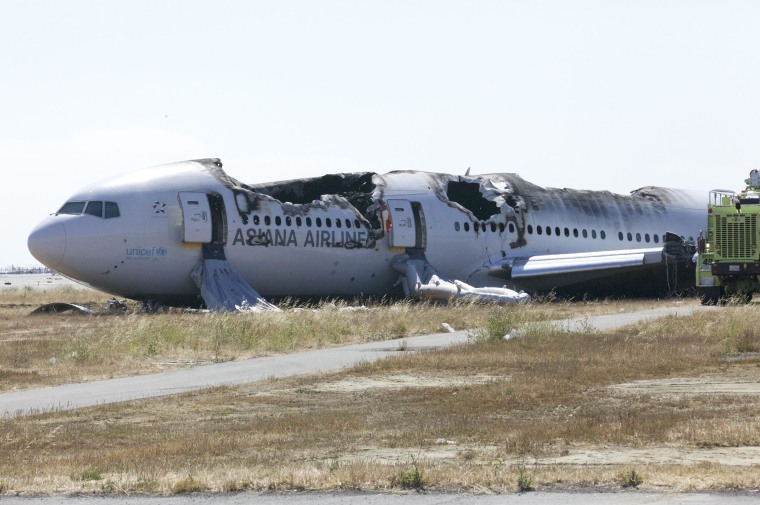SAN FRANCISCO — A Boeing 777 that crashed at San Francisco International Airport last summer had inadequate warning systems to alert its crew about problems with air speed, Asiana Airlines said in a filing with regulators released on Monday.
However, the airline also acknowledged that its crew failed to monitor and maintain a safe airspeed before the July 6 crash and failed to abort the landing in time.
In its report to the National Transportation Safety Board, Asiana said the cockpit crew believed the auto throttle would keep the plane going fast enough to reach the runway — when in fact the auto throttle was effectively disengaged after the pilot idled it to avoid an unexplained climb earlier in the descent.
The airline said the plane should have been designed so the auto throttle would maintain the proper speed after the pilot put it in "hold mode."
Instead, the plane gave no indication that the plane's auto throttle had stopped maintaining the set air speed, and a low air speed alerting system came on too late for the pilots to avoid the crash, Asiana said.
"The flight crew believed that the autothrottle system would maintain the commanded airspeed through the final approach," Asiana said.
The NTSB previously said the pilots showed signs of confusion about the 777's elaborate computer systems. The agency has not determined an exact cause of the crash, which led to the deaths of three of the 307 passengers on board.
In its submission to the NTSB, Boeing said the airplane and all airplane systems were functioning as expected prior to impact and did not contribute to the crash.
"Boeing believes that the evidence supports the following conclusion: This accident occurred due to the flight crew's failure to monitor and control airspeed, thrust level and glide path on short final approach," the airplane manufacturer said.
